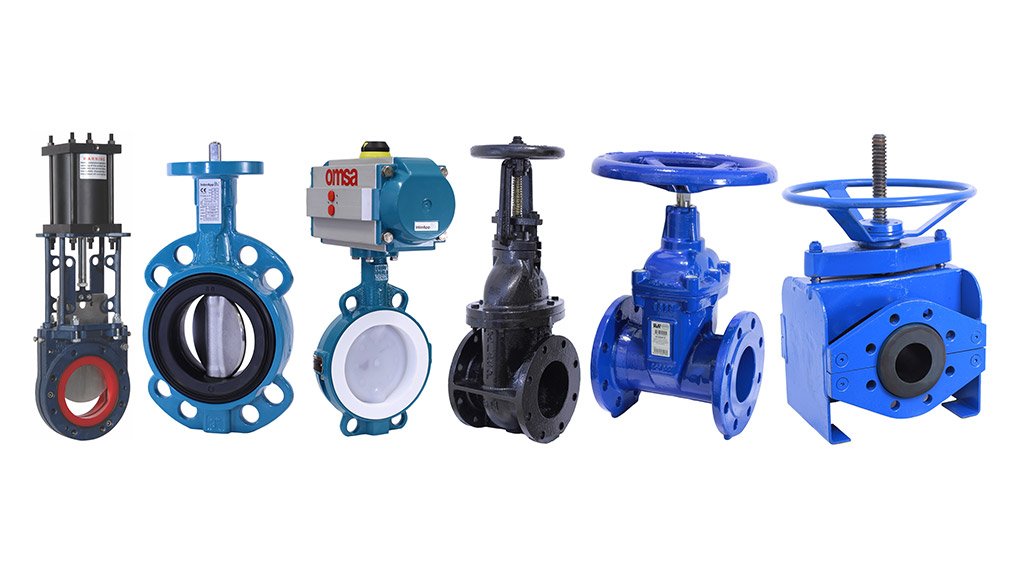Valves are critical components in fluid pipeline systems, serving as control elements that regulate, isolate, or direct the flow of various media. They play an essential role in isolating equipment and piping systems, regulating flow, preventing backflow, and relieving pressure. Given their importance, understanding valve types, characteristics, and selection criteria is crucial for ensuring efficient and safe operation in industrial applications.

Table of Contents
Toggle1. Classification of Valves
Valves can be classified in several ways depending on their function, structure, operation, and application.
1.1 By Operating Mechanism
Valves can be divided into two main categories:
Automatic Valves: These operate automatically based on the pressure or flow of the medium itself, such as check valves, safety valves, pressure-reducing valves, steam traps, and control valves.
Actuated Valves: These require manual, electric, pneumatic, or hydraulic actuation, such as gate valves, globe valves, butterfly valves, ball valves, and plug valves.
1.2 By Structural Characteristics
Based on the movement direction of the closing element relative to the valve seat:
Globe-type: The closure element moves linearly along the seat centerline.
Gate-type: The closure element moves vertically to the seat.
Plug/Ball-type: The closure element (plug or ball) rotates around its axis.
Swing-type: The closure element rotates around an axis outside the seat.
Butterfly-type: The closure disc rotates around an internal shaft within the valve seat.
Slide-type: The closure element slides perpendicular to the flow path.
1.3 By Function and Purpose
Valves can be categorized according to their function:
On/Off Valves: Gate valves, globe valves, ball valves, butterfly valves.
Check Valves: Prevent backflow of fluid.
Regulating Valves: Adjust pressure and flow rate, e.g., control valves and pressure-reducing valves.
Diverting Valves: Change or distribute flow direction, e.g., plug or slide valves.
Safety Valves: Protect systems by releasing excess pressure.
Special Purpose Valves: Drain valves, vent valves, and steam traps.
1.4 By Actuation Method
Manual Valves: Operated via handwheels, levers, or gearboxes.
Electric Valves: Driven by electric actuators.
Pneumatic Valves: Operated by compressed air.
Hydraulic Valves: Driven by pressurized fluid such as oil or water.
1.5 By Pressure Rating
Vacuum Valves: For absolute pressures below 0.1 MPa.
Low Pressure: PN ≤ 1.6 MPa.
Medium Pressure: PN 2.5–6.4 MPa.
High Pressure: PN 10–80 MPa.
Ultra-High Pressure: PN ≥ 100 MPa.
1.6 By Temperature Range
Normal Temperature: −40°C to 425°C.
High Temperature: 425°C to 600°C.
Heat-Resistant: Above 600°C.
Low Temperature: −150°C to −40°C.
Cryogenic: Below −150°C.
1.7 By Nominal Diameter
Small Diameter: DN < 40 mm
Medium Diameter: DN 50–300 mm
Large Diameter: DN 350–1200 mm
Extra-Large Diameter: DN ≥ 1400 mm
1.8 By Connection Type
Flanged Valves
Threaded Valves
Welded Valves
Clamped Valves
Compression Fitting Valves
2. Valve Characteristics
Valve characteristics can be divided into operational and structural aspects.
Operational Characteristics: Define performance and application scope, including type (shut-off, control, safety), material of major components, and actuation method.
Structural Characteristics: Define installation and maintenance parameters, such as face-to-face dimensions, connection type, sealing surface design, and stem configuration.
3. Steps for Selecting the Right Valve
Determine the purpose of the valve in the system and its working conditions (medium, pressure, temperature).
Identify the nominal diameter and connection type (flanged, welded, threaded).
Choose the actuation method (manual, electric, pneumatic, or hydraulic).
Select suitable materials for the valve body and internal parts.
Determine the valve category (on/off, regulating, or safety).
Choose the specific valve type (gate, globe, ball, butterfly, etc.).
Define technical parameters such as flow coefficient, discharge capacity, and pressure drop.
Confirm geometrical dimensions and installation space.
Refer to product catalogs and specifications to finalize the choice.
4. Key Considerations When Selecting Valves
Working conditions (pressure, temperature, corrosiveness, viscosity).
Required flow characteristics (flow resistance, leakage class, Cv value).
Installation and dimensional constraints.
Reliability, service life, and safety requirements (especially for toxic, flammable, or hazardous media).
5. Guidelines for Choosing Different Valve Types
Gate Valves
Ideal for on/off service. Suitable for steam, oil, and viscous media with suspended particles. Not recommended for throttling.
Globe Valves
Best for flow control and throttling applications. Suitable for high-pressure, high-temperature service but not for viscous or particulate media.
Ball Valves
Excellent sealing performance, low torque, and quick operation. Ideal for high-pressure, corrosive, or cryogenic applications.
Throttle Valves
Used for precise flow or pressure control in low-temperature, high-pressure environments. Not suitable for viscous or particulate fluids.
Plug Valves
Quick-acting valves suitable for low-temperature, viscous, or slurry media.
Butterfly Valves
Compact, lightweight, and ideal for large-diameter applications with low pressure loss requirements (e.g., water, air, or oil).
Check Valves
Used to prevent backflow. Various types include lift, swing, and wafer check valves.
Diaphragm Valves
Ideal for corrosive or slurry media. Common in water treatment, chemical, and pharmaceutical industries.
6. Conclusion
Valves are the ultimate control elements in any fluid system. They determine the flow direction, pressure, and rate within pipelines. Choosing the right valve requires a solid understanding of operating conditions, valve structures, and performance requirements. By following the proper selection steps and principles, engineers can ensure reliable, safe, and efficient operation across various industrial processes.
